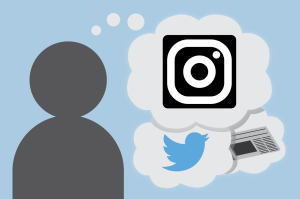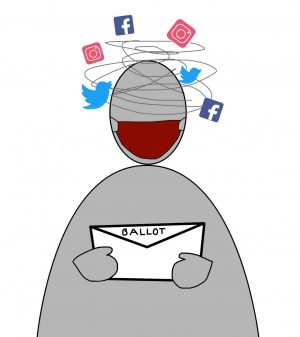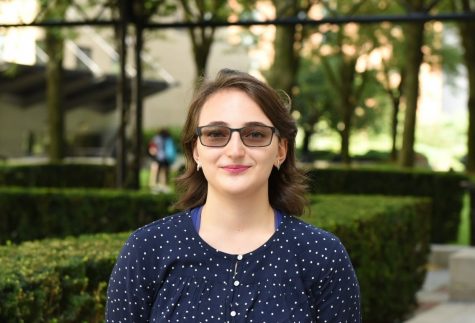Finding Credibility in a Noisy News World: The Struggle to Be an Informed Citizen
It is important to recognize biases in the sources we consume news from and to question the narratives they present.
December 4, 2020
With all the social and political events that have occured in 2020, it seems that we are constantly consuming some regular form of news. While many understand that internet sources are often inaccurate due to the limited regulation of content, people are unaware of the faulty nature of established news sources.
Although it may not be explicit to most viewers or readers, news sources almost always have a biased agenda that is swayed by the people funding the station. Sources that don’t depend on an ad-based revenue model are often able to produce more objective work, since they don’t need to conform to the ideologies of the companies they advertise. However, very few news stations actually have this revenue model, which makes news biases more common than we may assume.
So how can we, as college students, approach the biases that occur throughout different types of media sources? Although we cannot change the innate prejudices that a source contains, we can take action to discern the credibility of a source.
One of the clearest signs that a news source has fair and accurate coverage is when it is transparent to consumers.
One helpful way of doing this is by remembering the acronym CRAAP, which stands for currency, relevance, authority, accuracy and purpose. The first step is to look at the currency of the article or news story. Recent articles are more reliable because older information is often proven wrong.
Secondly, the relevance of the article should be taken into account. Instead of just accepting the article at face value, it is necessary to see whether the article could be of use to you. Some articles might be visually appealing but ultimately provide no relevant content.
The third step is authority, which forces you to evaluate the author and their knowledge. Have they written other articles on this topic? Are they well-known within their field? For this step, you should do some further research on the author in order to understand their biases and perceptions.
The fourth step is accuracy. The best and most valid sources are often verified by other sources, making articles that appear in only one web search a cause of concern. This is because content is more likely to be factual if several different news sources are reporting the same information.
Lastly, the purpose of the article should be questioned. Often, news sources add in emotional appeals to engage readers. However, this may misconstrue the information. If you experience a strong reaction to an article, such as sadness or intense happiness, then it is possible that the information is overly dramatized. Checking your sources by utilizing CRAAP will automatically be useful in understanding their credibility.
The best way to overcome preconceived notions is by seeking out discourse and sources that challenge your natural beliefs.
In addition to looking for flaws in the media, it is also important to recognize trustworthy qualities within a news source. One of the clearest signs that a news source has fair and accurate coverage is when it is transparent to consumers. For example, the news source should clearly indicate where and how they obtain their verified information; a news source that does not disclose this information should be questioned further.
It is also important to examine the expertise of the news reporters. While education level is certainly not all that should be considered, good news sources often hire reporters and writers who have an education in ethical journalism. You can find the education and credentials of reliable journalists through an internet search. Some news companies train new hires themselves, which can lead employees to develop biased techniques and standpoints.
Similar to how the news contains prejudices, it is important to recognize our own biases while consuming media. Confirmation bias is the tendency for us to seek out information that confirms our preconceived notions, while also rejecting information that challenges our beliefs. In many ways, confirmation bias allows us to feel secure and confident in our way of thinking.
While one might assume that higher education levels lead to less confirmation bias, a study by Klein and Buturovic in Econ Journal Watch and reported in the Atlantic found that college students and professors are still victims of confirmation bias and groupthink. The article argues that the best way to overcome preconceived notions is by seeking out discourse and sources that challenge your natural beliefs.
Many news sources tend to indicate certain political ideologies. For example, sources such as CNN, MSNBC and the Washington Post lean more toward liberal viewpoints. Other sources, such as Fox News, National Review and The Washington Times, are more conservative. Lastly, there are several media outlets that put out centrist news coverage, such as ABC News, BBC News and NBC News.
The best way to evaluate your own biases is to challenge the narrative of the news and media you are consuming. When reading and engaging with news sources, questioning the narrative can help reduce the “fluff” that comes along with putting together a news story. Through the pursuit of discourse and repeatedly encouraging yourself to strip the story and anecdote from the news material, you can truly engage in the most authentic news source material.
Although the process of discovering reputable and reliable news sources will never be perfect, actively educating ourselves to be aware consumers can help combat news biases and inaccuracies. It is important to approach every potential source with a skeptical mind and a motivated attitude that allow us to dig deeper into the information. Now more than ever, we must evaluate the credibility of our sources in order to hear the real and full story.
By Daphne Buitron, Sarah Cassidy, Emma Ferguson, Noor Kaur, Julia Mayes, Diya Patel, Anastasia Pezza, and Blanca Sarmiento














